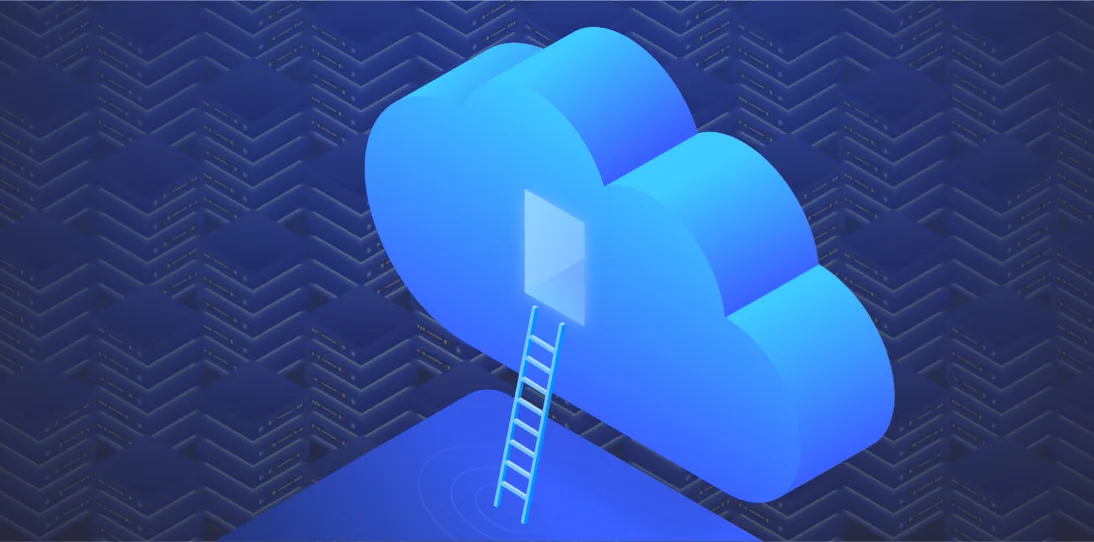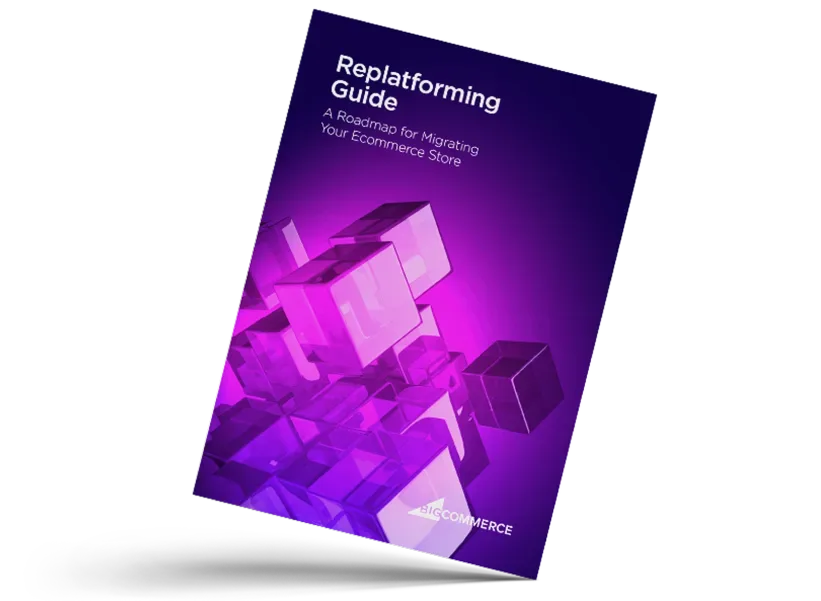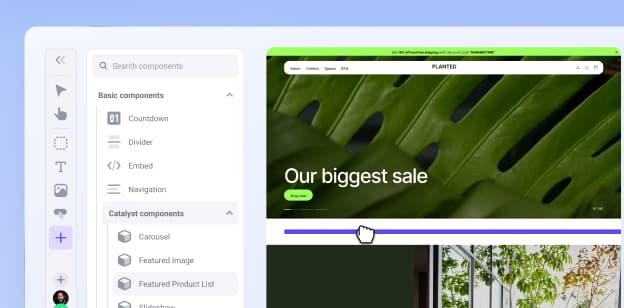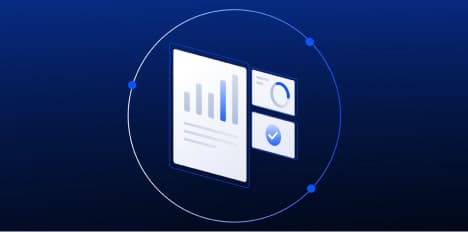
SaaS vs PaaS vs IaaS
Get The Print Version
Tired of scrolling? Download a PDF version for easier offline reading and sharing with coworkers.
A link to download the PDF will arrive in your inbox shortly.
What you'll learn:
The key differences between SaaS, PaaS, IaaS, and on-premise solutions
When to use each cloud service model based on your business goals
Real-world examples of cloud services in ecommerce and beyond
Cloud computing is no longer optional. It is the backbone of how modern businesses build, scale, and compete.
Whether you are launching new applications or growing across multiple markets, the cloud offers a faster, more flexible path than traditional IT systems.
At the centre of this shift are three core cloud service models:
SaaS: Software as a Service
PaaS: Platform as a Service
IaaS: Infrastructure as a Service
Each model offers a different balance of control, flexibility, and complexity. Choosing the right one can directly impact your speed to market, development workflow, and total cost of ownership.
Just how fast are these models growing?
SaaS is projected to reach $1.1 trillion globally by 2032
IaaS is expected to grow more than five times by 2033
PaaS is on track for 16% annual growth through 2030
In this guide, we will explain how SaaS, PaaS, and IaaS compare, highlight real-world use cases, and help you decide which model fits your strategy best.
The key differences between on-premise, SaaS, PaaS, IaaS
Not long ago, most IT systems lived on-premise, managed entirely in-house with physical servers and hardware.
Today, cloud computing has changed the game, giving businesses access to powerful, flexible tools without the need for heavy infrastructure.
SaaS, PaaS, and IaaS are three modern cloud computing service models. Each offers a different way to manage and deliver digital services, depending on how much control and customisation your business needs.
Most businesses do not rely on just one. Many use a mix of SaaS and IaaS for core operations, and turn to PaaS when they need to build or deploy custom applications.
IaaS.
IaaS works primarily with cloud-based and pay-as-you-go services such as storage, networking, and virtualisation.
Examples of popular IaaS providers include:
AWS EC2
Rackspace
Google Compute Engine (GCE)
Digital Ocean
Microsoft Azure
Adobe Commerce (self-hosted deployment)
PaaS.
PaaS focuses primarily on hardware and software tools available over the internet.
Examples of popular PaaS providers include:
AWS Elastic Beanstalk
Heroku
Windows Azure (mainly used as PaaS)
Force.com
Google App Engine
OpenShift
Apache Stratos
Adobe Commerce (cloud-hosted)
SaaS.
SaaS platforms involve software that is available via third-party over the Internet.
Examples of popular SaaS providers include:
BigCommerce
Google Workspace, Salesforce
Dropbox
MailChimp
ZenDesk
DocuSign
Slack
Hubspot

There's a lot to love ❤️
Watch a demo to see the BigCommerce platform in action.
The 3 types of cloud computing service models explained
1. IaaS (Infrastructure as a Service).
IaaS, also known as cloud infrastructure services, provides end users with cloud-based alternatives to on-premise, physical infrastructure, allowing businesses to purchase resources on-demand instead of the more costly venture of having to buy and manage hardware.
IaaS characteristics.
IaaS is scalable and offers businesses greater flexibility than on-premise solutions through the cloud. IaaS businesses typically provide services such as pay-as-you-go storage, networking and virtualisation.
IaaS cloud servers are typically offered to businesses over the internet, whether through a dashboard or an API, ensuring users have complete control over their computing infrastructure.
IaaS platforms are:
Highly flexible and highly scalable
Accessible by multiple users
Cost-effective
IaaS advantages.
Maintaining traditional IT infrastructure on premise is expensive and time consuming. It often requires large upfront investments in physical servers, plus ongoing maintenance from external IT contractors.
Infrastructure as a Service (IaaS) removes that burden. You can access computing resources on demand, paying only for what you need and scaling as your business grows.
Other key advantages include:
Scalable infrastructure that grows with you without costly hardware upgrades
The ability to replace or reconfigure services quickly without wasting previous investments
More control over your IT infrastructure, without needing deep technical expertise
IaaS gives you flexibility and freedom. You can manage your infrastructure directly or automate tasks through your provider, all without being locked into long term hardware decisions.
IaaS disadvantages.
There are certain limitations and concerns when it comes to transitioning to IaaS, including:
Legacy systems: Before a full migration to the cloud is completed, any legacy technology or applications should be reviewed for compatibility. There are many older systems that are not designed for cloud-based services and may need to be upgraded or replaced.
Security: With the move from on-premise to the cloud, there could be new security threats, whether sources from the host or other virtual machines (VMs). It is critical that organisations review and research up-to-date security threats and their remediation strategies.
Internal Training: With a new system comes a lack of familiarity with its intricacies. Businesses should prepare additional training and resources to ensure their users know what they are doing.
When to use IaaS.
IaaS is beneficial to businesses of all shapes and sizes. It allows complete control over your infrastructure and operates on a pay-as-you-use model, which fits into most budgets.
With most IaaS platforms, you get access to ongoing support and have the option of scaling up your requirements at any time.
Utilising IaaS is an excellent way to future-proof your business.
IaaS non-ecommerce example.
A clear example of IaaS is AWS EC2 (Elastic Compute Cloud).
With EC2, businesses can launch virtual machines in the public cloud without owning or managing physical servers. AWS handles the underlying data centre infrastructure, while users retain control over the operating systems, IT resources, and application stack.
EC2 offers scalable infrastructure on a pay-as-you-go model. This allows businesses to run web applications, internal tools, or other workloads with minimal upfront cost and no long-term hardware commitments. It's ideal for teams that want control and flexibility without managing their own servers.
IaaS ecommerce example.
Adobe Commerce (formerly Magento) can be deployed in an IaaS model when merchants choose to self-host the platform on third-party infrastructure providers like AWS or Rackspace.
In this setup, Adobe provides the software licence, but the merchant is responsible for selecting and managing the hosting environment. This approach offers flexibility to scale and optimise performance based on specific business needs, without investing in physical servers or a full data centre.
However, merchants still maintain control over the backend, including installing updates, managing operating systems, and ensuring site security. This makes Adobe Commerce a strong fit for businesses with the resources to manage their own IT infrastructure while benefiting from a powerful ecommerce platform.
2. PaaS (Platform as a Service).
PaaS, also known as cloud platform services, provides developers with a framework, software and tools needed to build apps and software — all accessible through the internet.
Often seen as a scaled-down version of IaaS, PaaS gives its customers broader access to servers, storage and networking, all managed by a third-party provider.
PaaS characteristics.
PaaS delivery is comparable to SaaS methods, with the main difference being that customers are not able to access online software but an online platform.
PaaS provides that platform for software developers to create, allowing them to concentrate on the software itself instead of any external issues.
PaaS platforms are:
Accessible by multiple users
Scalable — customers can choose from various tiers of computing resources to suit the size of their business
Built on virtualisation technology
Easy to run without extensive system administration knowledge
PaaS advantages.
PaaS is primarily used by developers who are building software or applications.
A PaaS solution provides the platform for developers to create unique, customisable software meaning that developers don't need to start from scratch when developing applications, saving them time and money on writing extensive code.
PaaS is a popular choice for businesses who want to create unique applications without spending a fortune or taking on all the responsibility. It's similar to the difference between hiring a venue to put on a show vs building one yourself to put on a show.
The venue stays the same, but what you create in that space is unique.
PaaS disadvantages.
Like IaaS, there are certain drawbacks to using PaaS that companies should be aware of, including:
Integrations: With PaaS, you may encounter challenges when integrating new applications. This is tied into issues related to legacy systems since there are often aspects of these systems that aren't built for the cloud.
Data security: Using third-party servers for your data could potentially lead to additional security risks. Security options may also be limited since you will have to find a solution that can integrate with the third-party systems.
Runtime: PaaS solutions may not be fully optimised for the language and frameworks your business uses and finding a specifically tailored solution may be difficult.
Operational limitations: Customised cloud operations may not be compatible with PaaS solutions, especially those with management automation workflows. This can inhibit your operational capabilities and limit the full scope of your business.
When to use PaaS.
PaaS is often the most cost-effective and time-effective way for a developer to create a unique application.
PaaS allows the developer to focus on the creative side of app development as opposed to the menial tasks such as managing software updates or security patches. Instead, their time and brainpower can go into creating, testing, and deploying the app.
PaaS non-ecommerce example.
AWS Elastic Beanstalk is a good example of a PaaS solution. It offers a managed platform for deploying web applications and abstracts many of the infrastructure‑level tasks.
AWS provides many underlying cloud services such as EC2, RDS, and S3. Users can pick what they need, but Elastic Beanstalk simplifies many operational burdens like capacity provisioning, load balancing, scalability, and application health monitoring.
It also involves managing things like IAM roles and instance profiles under the hood, but much of that is handled for you out of the box.
PaaS ecommerce example.
Adobe Commerce (cloud-hosted) is a strong example of a PaaS solution for ecommerce. Merchants work directly with Adobe to scope their hosting needs, which are bundled into their monthly subscription.
With this cloud-hosted model, Adobe provides the underlying infrastructure, middleware, and deployment environment, allowing developers to focus on building and managing the application layer. Merchants still have full access to the source code and can customise their store's design, features, and functionality.
However, platform updates, security patches, and general maintenance are the merchant's responsibility. This level of control makes Adobe Commerce a good fit for businesses with in-house development resources who want flexibility without managing the full IT infrastructure stack.
3. SaaS (Software as a Service).
SaaS, also known as cloud application services, is the most commonly used service within the cloud market.
SaaS platforms make software available to users over the internet, usually for a monthly subscription fee.
They are typically ready-to-use and run from a users' web browser, which allows businesses to skip any additional downloads or application installations.
SaaS characteristics.
SaaS is delivered through the internet as a full functional service, accessible via any web browser.
With SaaS, vendors manage the data, servers and storage, ultimately eliminating the need for IT review and streamlining business processes.
SaaS platforms are:
Available over the Internet
Hosted on a remote server by a third-party provider
Scalable, with different tiers for small, medium, and enterprise-level businesses
Inclusive, offering security, compliance, and maintenance as part of the cost
SaaS advantages.
With Software as a Service (SaaS), there is no need to install or maintain software on your local devices. You simply log in through a browser, and the application is ready to use from any device with an internet connection.
This makes it easy for teams to access the same platform. Each team member can have their own login with role-based access, and there is no need for IT support to install software on multiple computers or manage version updates.
Another major benefit is the subscription-based software model. Most SaaS solutions charge a predictable monthly fee, which often includes updates, security, and support. This helps you manage costs and avoid unexpected maintenance expenses.
SaaS products are designed to be ready-to-use applications. You can often get started in just a few hours, making them ideal for businesses that want to move quickly without a heavy setup process.
From user-friendly interfaces to scalable pricing tiers, SaaS delivers convenience and flexibility for businesses of all sizes.
SaaS disadvantages.
Like IaaS and PaaS, there are limitations and concerns about SaaS, including:
Data Security: With data primarily located in off-premise servers, security could potentially become an issue. Ensure that you have the right security solutions in place and are comfortable with whichever SaaS service you are using.
Interoperability: Integrations with existing applications and services can be a concern since many SaaS apps are not designed for open integrations. Finding a service with integration capabilities can be difficult, and attempting to create your own can be worse.
Customisation: SaaS services typically allow minimal customisation for features, capabilities, and integrations. This can force companies to invest significant resources into managing or adding customisation capabilities.
Lack of control: With a SaaS solution, businesses often have to hand over ultimate control to the third-party service providers, giving them the keys to functionality, performance and even data. You will want to ensure that you trust the provider used or have the ability to review your information remotely.
When to use SaaS.
SaaS platforms are ideal for when you want an application to run smoothly and reliably with minimal input from you.
Take your email server, for example.
You want to know that you can continue to send and receive emails without needing to fiddle with your email settings or worry about updates. Imagine if your email server went under because you forgot to update it? That's simply not an option in today's marketplace.
If you use SaaS applications to run your email inbox, the chances of something going wrong are very small, and if something did go wrong, it would be up to the SaaS provider to find a solution.
You're not only paying for the SaaS applications/products, you're paying for peace of mind.
SaaS non-ecommerce example.
Google Workspace, formerly known as Google G Suite, is one of the most popular SaaS-based infrastructure services. The upgrade from G Suite came as a result of a more integrated experience across Google's broader suite, which allowed its customers to better connect with their various tools.
The Google Workspace suite features applications people are aware of, such as Gmail, Google Calendar, Google Docs, and more.
SaaS ecommerce example.
An excellent example of a SaaS ecommerce platform is BigCommerce.
BigCommerce is one of the leading SaaS ecommerce platforms for mid-market and enterprise brands. It has all the benefits associated with multi-tenant SaaS, ease of use, high-performance, and continuous updates, coupled with platform-wide APIs that enable businesses to customise their sites and integrate with external applications and services.
BigCommerce provides complete shopping cart software and hosting infrastructure to the user, allowing businesses to create an online shop within minutes without worrying about coding, hosting, or software.
The BigCommerce platform also has regular updates that automatically roll out for users, and software licences, upgrades, and hosting costs are all covered in the monthly subscription fee.
The final word
Choosing between SaaS, PaaS, and IaaS is not about picking one winner. It is about finding the right mix for your business goals, technical expertise, and budget.
Most businesses benefit from a combination of these models. As your needs evolve, the right cloud infrastructure can support innovation, speed to market, and long-term scalability.
No matter where you are in your digital transformation, understanding the differences between these cloud computing service models will help you make informed decisions that move your business forward.
FAQs about SaaS vs PaaS vs IaaS
The answer is dependant on your business. Each cloud service model offers different features and functionalities.
If you want out-of-the-box features, without the hassle of installations, then SaaS may be the best option for you.
If you need a platform designed for building software products, then PaaS would help your business immediately.
If you are looking for a highly flexible, scalable service, while maintaining control of its infrastructure, then IaaS is the right choice for you.
The most significant difference between PaaS and SaaS is that SaaS products are fully managed by another company, from the servers to the data itself. With PaaS, you are able to use the cloud-based platform as a foundation for building software.
If you want to create your own applications for your business, then PaaS platforms are the best option.
The greatest difference between IaaS and PaaS comes from who controls the system.
With IaaS, administrators gain more direct control over operating systems. On the other hand, users gain greater flexibility and control over proprietary applications or programmes with PaaS.
With both IaaS and SaaS, the cloud service providers manage servers, networking, virtualisation, and storage.
However, unlike SaaS, those who use IaaS are still responsible for managing some aspects of their business, including applications, runtime, middleware, and data. SaaS is the more out-of-the-box option, while IaaS maintains a small level of control.
SaaS tends to be the most cost-effective option for most businesses, as it eliminates the need for upfront infrastructure investments and maintenance costs. With SaaS, you pay a subscription fee to access the software, and the provider takes care of hosting, updates, and security.
PaaS can be cost-effective for developers and businesses that want to focus on application development without worrying about the underlying infrastructure. It reduces the costs associated with managing servers, storage, and networking.
IaaS provides the most flexibility but requires more technical expertise and management overhead. It can be cost-effective for larger organisations with specific infrastructure requirements or for those that need complete control over their environment.
SaaS generally requires the least technical expertise among the three models. Most SaaS applications are designed with user-friendliness in mind, making them accessible to a wide range of users, even those with limited technical knowledge.
PaaS demands a higher level of technical expertise compared to SaaS. While PaaS abstracts away some of the infrastructure management, users still need to have a good understanding of application development, deployment, and management.
IaaS requires the highest level of technical expertise among the three models. With IaaS, users have full control over the underlying infrastructure, including servers, storage, networking, and operating systems.
Yes, and many businesses do. Combining these cloud computing models allows you to tailor your tech stack to different needs.
For example:
Use SaaS for your CRM, email, and web applications
Leverage PaaS offers for application development using built-in development tools and middleware
Run core backend systems or host complex workloads on IaaS, where you control operating systems and manage virtual machines
This flexible mix gives you more options to optimise your infrastructure across functions.
If customisation is a priority, PaaS or IaaS may be better suited.
PaaS offers a pre-configured environment with tools for developers to build apps using preferred programming languages
IaaS provides the most freedom, letting you customise everything from operating systems to your full data centre stack
SaaS is typically less customisable, though many platforms do allow integrations or modular features. It's ideal for businesses that prefer ready-to-use applications with less management overhead.
Yes, your size and goals will impact which cloud computing model is most effective.
Startups often prefer SaaS to move quickly without managing infrastructure
Mid-market and enterprise businesses may combine IaaS and PaaS to support complex workloads, internal DevOps teams, and layered application development
Larger companies might also use a hybrid cloud approach, mixing public cloud and private environments to balance scalability with control over sensitive data.
Migrating between cloud service providers can range from simple to complex depending on your setup.
SaaS migrations are often straightforward, especially if data export/import tools are available
PaaS migrations may require rewriting parts of your app if the new provider supports different middleware or programming languages
IaaS can involve significant effort if you're replicating full backend systems, including data storage and IT resources
Before switching, review compatibility, service levels, and long-term support to ensure a smooth transition.
For non-technical teams, SaaS is typically the best fit.
It removes the complexity of managing operating systems, data centres, or updates. Users simply access the software through a browser — no need to worry about maintenance or configuration.
If your team is slightly more technical but not ready to manage full infrastructure, PaaS can be a good middle ground. It simplifies application development by handling the backend setup for you.
Both options reduce reliance on in-house IT and help you optimise your operations without needing deep technical skills.
Common examples of PaaS include Amazon Web Services (AWS) Elastic Beanstalk, Google App Engine, and Heroku. These platforms provide the environment and tools needed to build and deploy software applications without managing the underlying infrastructure.

Ebook: Migrating Your Ecommerce Store
In this ebook, you'll get a step-by-step guide for successfully migrating to a new ecommerce platform.




